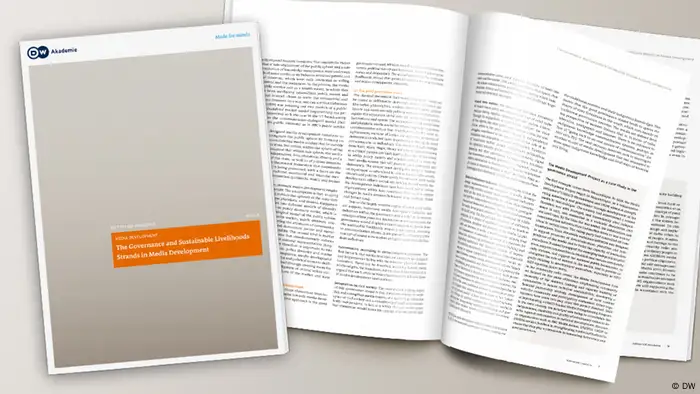Edition DW Akademie
Sustainable livelihoods and governance in media development
Donors are often interested in strengthening the media as a way of speeding up governance reform. An alternative approach is to focus on the communication needs of the poor, argues scholar Linje Manyozo.
In this publication, media scholar Linje Manyozo traces the history of media development and examines the two main theoretical models it is based on – good governance and sustainable livelihoods. He also presents three theoretical traditions (modernization, information interventions and public sphere) that have defined and shaped the way media development is understood today.
The good governance approach to media development is based on the the notion that a strong and independent media can boost government accountability through its watchdog and monitoring roles. As such, international donors fund freedom of expression as a way of promoting good governance and democracy – an approach, Manyozo contends, based on western experience that can neglect local contexts and stakeholder engagement
The sustainable livelihoods approach is about meeting the needs of the most vulnerable and poor and prioritizes areas such as food, housing clothing and the environment. As such, the aim is to improve local livelihoods and local development. Manyozo argues that this approach can "change and even save lives" even in conditions with an absence of good governance.
Linje Manyozo is a Senior Lecturer in Communication for Development at the Australian university, RMIT. He is a development practitioner whose portfolio with international and community development organizations spans the strengthening of health systems, disease prevention and women and youth empowerment – and he has used media development in these fields as a strategy to achieve desired outputs and outcomes.
DW recommends
WWW links
Downloads
- Date 05.10.2016
- Feedback: Send us your feedback.
- Print Print this page
- Permalink https://p.dw.com/p/2Qsgk
- Date 05.10.2016
- Send us your feedback.
- Print Print this page
- Permalink https://p.dw.com/p/2Qsgk

